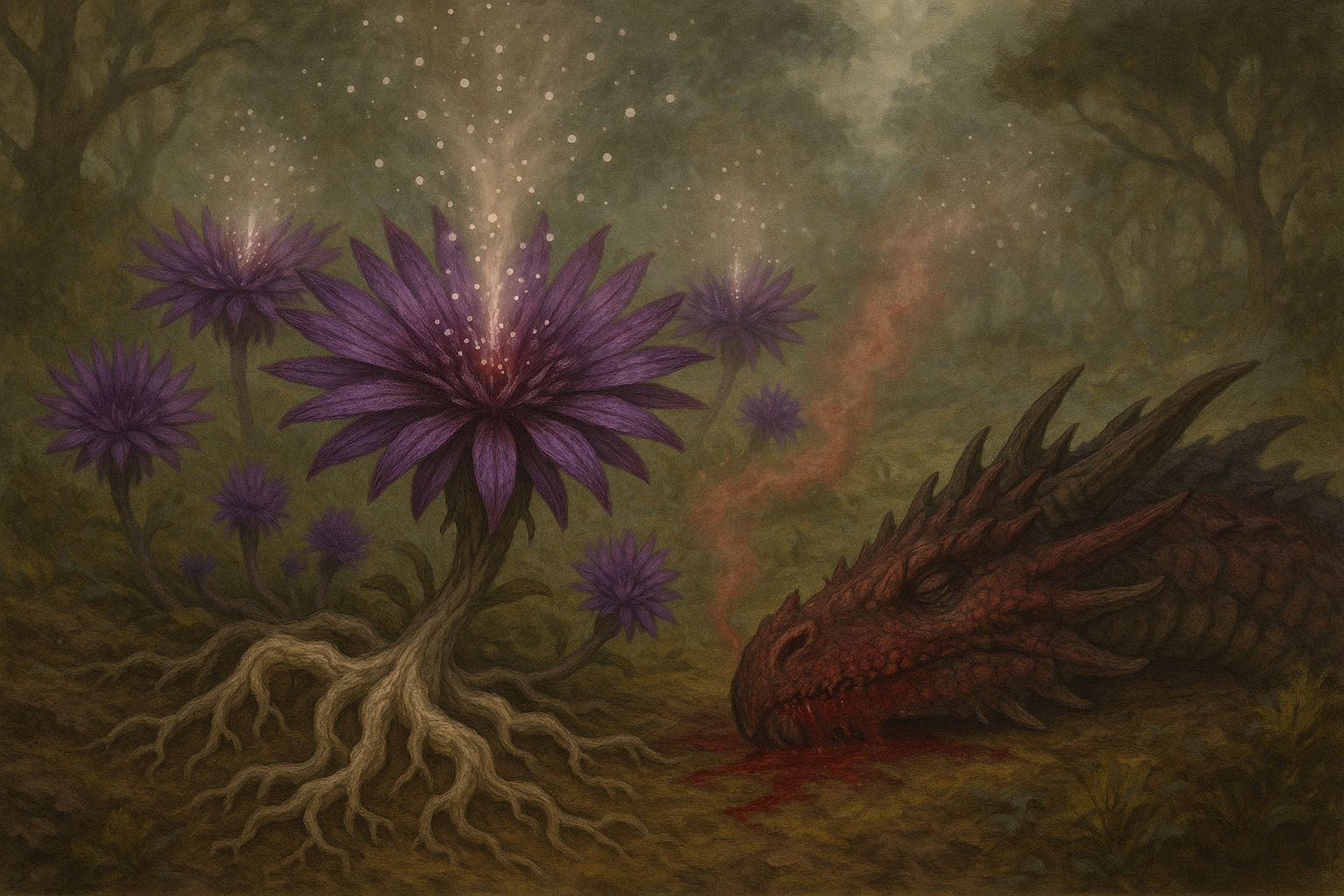The Silent Necrosis
Disclaimer: This document is an exercise in speculation, though it is grounded in fragments of historical records and archaeological discoveries. The sources from which this information is drawn are few, disparate, and often contradictory, leaving significant gaps in understanding. While efforts have been made to piece together a coherent picture, the result is incomplete at best—an uncertain reconstruction based on limited and unreliable evidence.
No medical consensus has been, nor could be, reached regarding the symptoms, prognosis, or potential treatments of the condition described herein. Any attempt to apply this material in a clinical or diagnostic context would be reckless in the extreme, with consequences that may elude even the most diligent foresight. Consider this your only warning: the events and ailments described are drawn from a time when knowledge was scarce, fear abundant, and survival uncertain. To treat this document as anything more than speculative reconstruction is to risk misunderstanding that which is poorly understood at best. Proceed with the utmost caution, for curiosity alone offers no protection against misjudgment.
– Dr. Elias Vancroft, Magister Medicus Arcanum.
History
As the world entered a period of stillness, sometime estimated to be between the 230th to 240th year range of the Age of Wandering, a massive pandemic spread across the continent of Kaherr, faster and further than any disease that had yet to be encountered on the planet. It killed nearly everything that encountered it. Huge swaths of mortals, livestock, and plant life were erased from Milios in a span of time no more than 5 years. This disease would be deemed Silent Necrosis - an ancient disease from a distant time.
While it may have had a profound and terrible impact on history and those who existed during that time, in the current day its effects are far less. Since the last person to have contracted the disease would have died more than 800 years ago, most of mortal-kind never have any reason to fear the ancient disease nor would it be something to ponder outside of playful speculation on what may have caused it. Most researchers and historians moved on to study other events and mysteries long ago. It could be said that the Silent Necrosis may have never existed, merely a misinterpretation of history, from a smattering of faded scrawling's on ancient and ruined tablets.
Culture
Current-day historians working in collaboration with medical practitioners have not been able to trace the disease back to a cause. Furthermore, there have been no modern documented cases of the disease, making a certifiable prognosis or diagnosis near-impossible. However, many speculations have been developed as mortal-kind attempted to explain the plague or find some reason in it. Some believe it was a divine curse, cast upon the world as a punishment for the mistreatment of the Dragonborn, while some believe the opposite: that the punishment was instead for those who rebelled against the Roshin Dynasty. Even then, some take to blaming the Dragons themselves for defending their dragonborn kin. Many speculate that the cause may have resulted from the immeasurable amount of blood spilled having seeped into the soil, positioning the water and food. And yet, regrettably, some have chosen to use the uncertainty around the disease's cause for their own personal gain, blaming whoever they needed to in their pursuit of wealth, status, or power.
Disparate accounts believed to be referring to the disease have provided a host of names which have assisted the effort to understand it. These names include but are not limited to: Breath Rot, Blight's Kiss, Sickroot, and Deathwhisper. Ultimately, Silent Necrosis was chosen many years ago, during the initial efforts to uncover it's mysteries.
Prognosis
At current time, there is no scientific consensus about the the exact course the disease will run. However, there has been enough evidence of correlations between different archeological discoveries and existing historical documentation to allow for a few assumptions about the process of the disease.
- Awareness of initial infection is likely to go unnoticed for some time.
- Once infected and at some point after the initial period of dormancy, the patient will likely experience a sudden and rapid decline in their vitality. Those that are believed to have had the disease report feeling a general "slowness" that manifested for apparently no cause. This could indicate symptoms like generalized fatigue, mental fog, or narcolepsy.
- Over time this slowness seems to continue to worsen and eventually, after another indeterminate period of time, the last apparent commonality is that of the patient's breath, which takes on a putrid, fungal-like scent of rot or decay. (This is where the Silent Necrosis gets its name.)
Most documented reports are consistent up to this point, after which, each case branches wildly into a seemingly random assortment of symptoms and effects. This fact alone calls into question the entire prognosis and is the reason for the lack of consensus or clarity surrounding the disease. However, due to much more reliable historical records about the plague and the amount of death is caused, it could be assumed that the Silent Necrosis is ultimately fatal.
Origin
Natural
Rarity
Exceedingly Rare
Severity
Fatal

